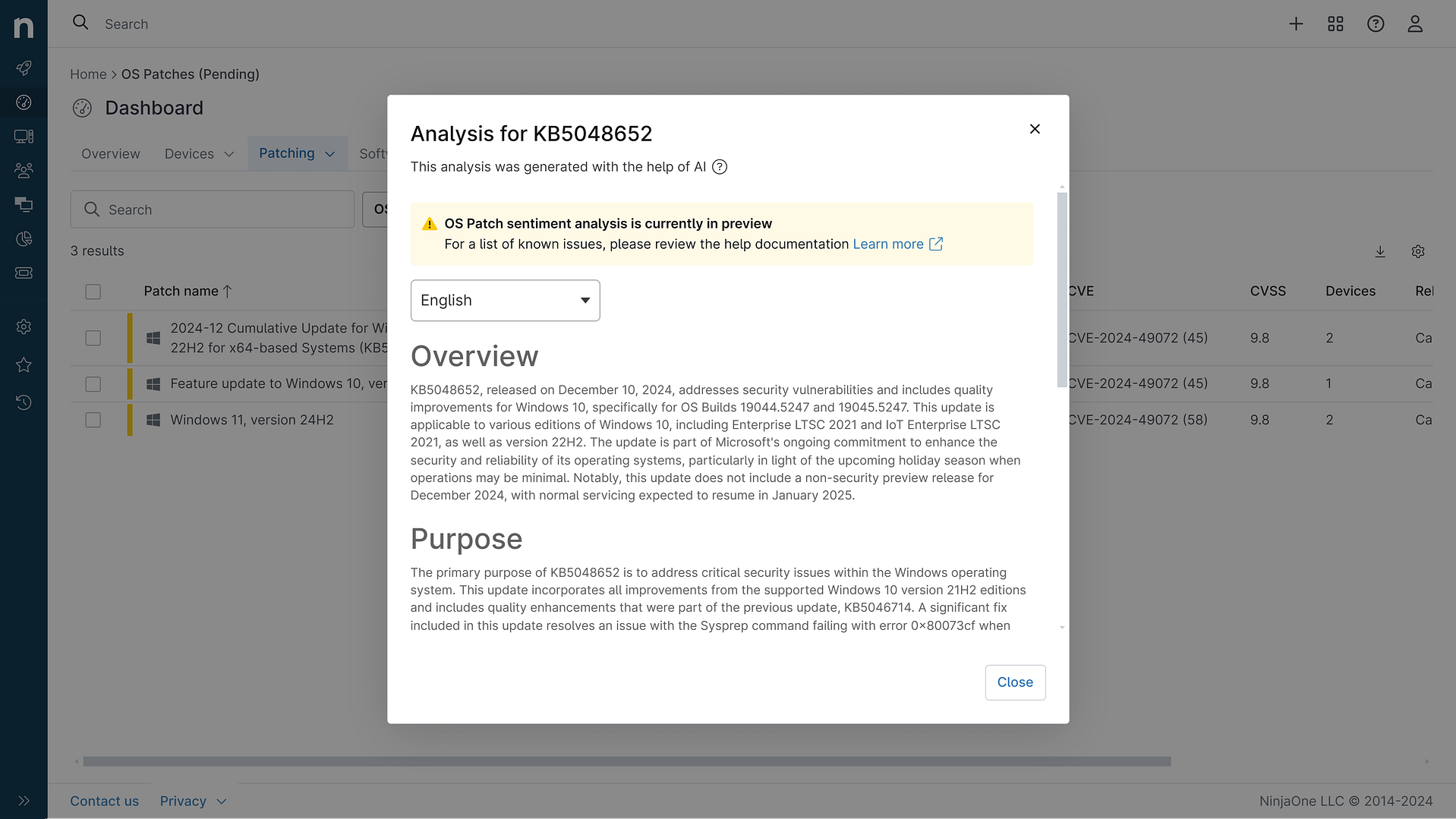KB5039907: Overview with user sentiment and feedback
Last Updated December 21, 2024
Probability of successful installation and continued operation of the machine
Overview
The KB5039907 update, released on July 9, 2024, is a cumulative update for the .NET Framework 3.5 and 4.8.1 specifically targeting Windows Server 2022. This update is crucial as it addresses significant security vulnerabilities and enhances the overall reliability of the .NET Framework. The primary focus of this update is to mitigate a remote code execution vulnerability identified as CVE-2024-38081, which could potentially allow an attacker to gain elevated privileges on affected systems. In addition to security improvements, the update also includes various quality enhancements aimed at improving the performance and stability of applications built on the .NET Framework.
General Purpose
The purpose of KB5039907 is to provide essential security and reliability updates for the .NET Framework 3.5 and 4.8.1. This update specifically addresses a critical elevation of privilege vulnerability, which is a significant concern for system administrators and users alike. Alongside the security fixes, the update resolves memory leak issues related to AccessibleObjects in WinForms and improves the handling of x509 certificates under Azure Active Directory. These enhancements are vital for maintaining the integrity and performance of applications that rely on the .NET Framework, ensuring that they operate securely and efficiently.
General Sentiment
The general sentiment surrounding KB5039907 appears to be cautious but ultimately positive. Users recognize the importance of addressing security vulnerabilities, particularly the critical CVE-2024-38081, which has raised concerns about potential exploitation. However, the update has also been met with some apprehension due to the known issues introduced by the changes in the System.IO.Path.GetTempPath method. While many users appreciate the security enhancements, there are concerns about the implications of the breaking changes, which may require adjustments in existing applications. Overall, the sentiment leans towards a recommendation for installation, provided that users are aware of the potential adjustments needed.
Known Issues
- The update introduces breaking changes to the System.IO.Path.GetTempPath method, which may affect applications relying on its previous behavior.
- Users may experience differences in the return values of GetTempPath and GetTempPath2 APIs, particularly in SYSTEM versus non-SYSTEM processes.
- A temporary workaround is available to opt-out of the security fix, but it is not recommended by Microsoft as it could expose systems to vulnerabilities.
Disclaimer: We take measures to ensure that AI-generated content is of the highest possible quality, but we cannot guarantee its accuracy and recommend that users do their own independent research. Generated on 2024-12-21 10:42 PM
